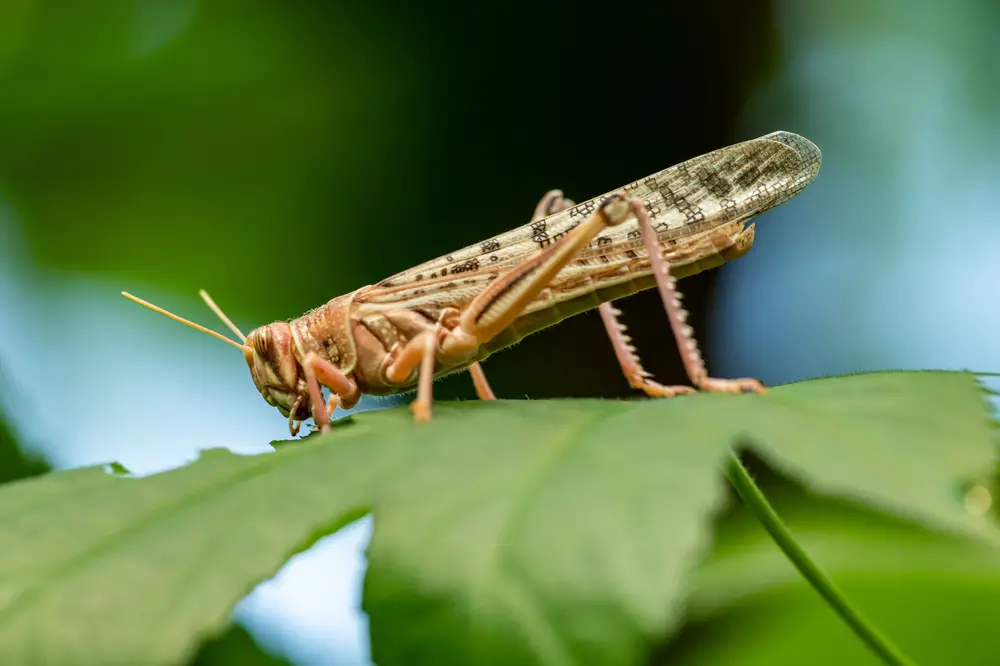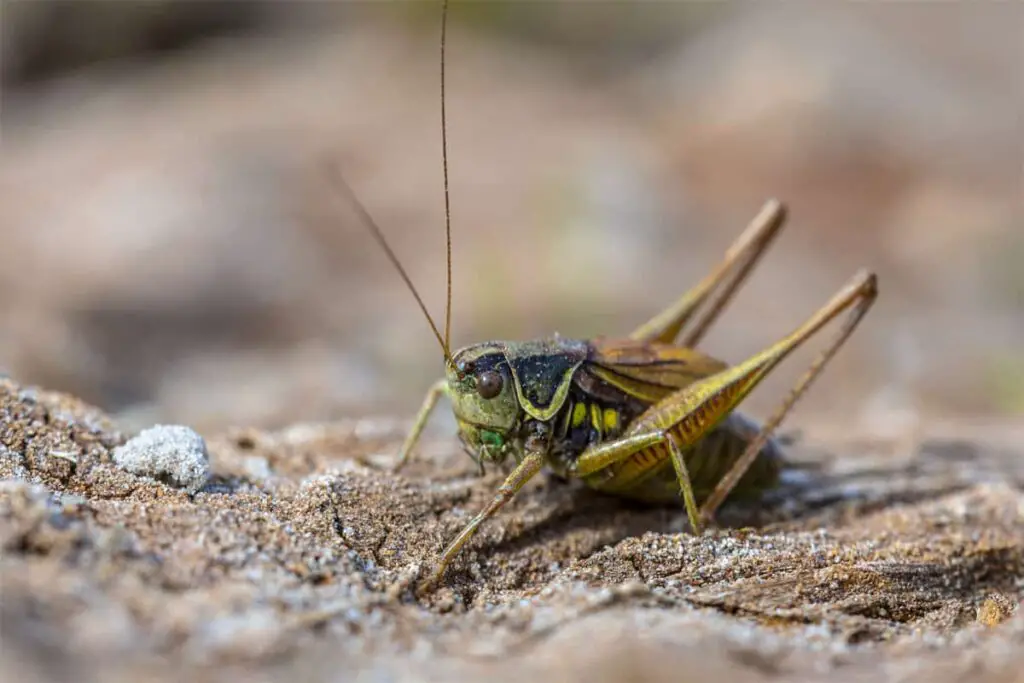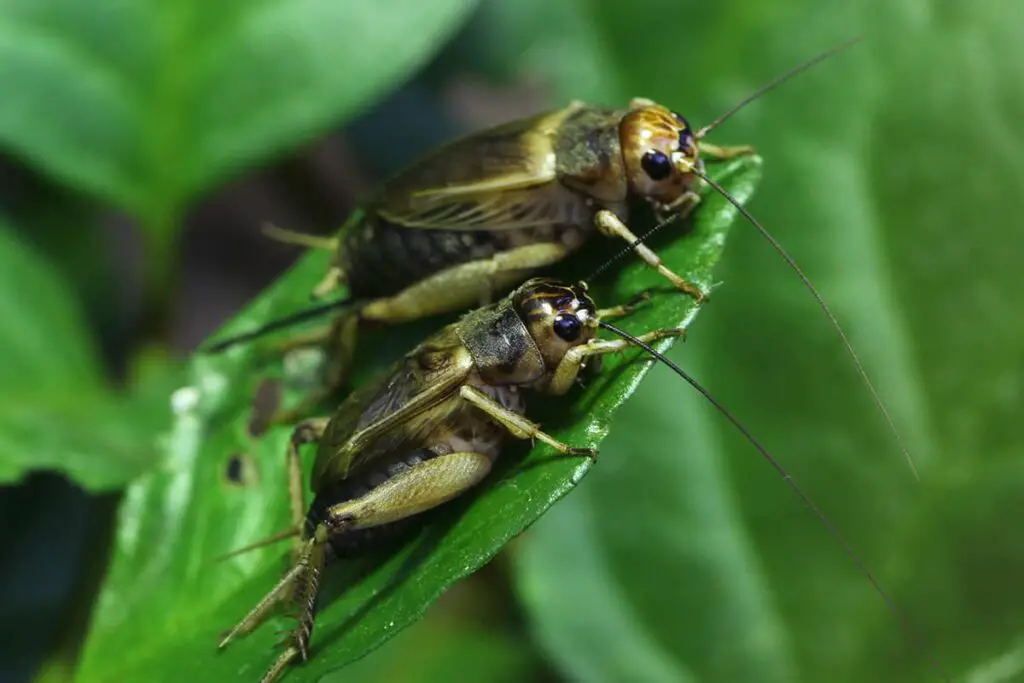If you’re a cricket enthusiast, keeping your crickets alive is key to a thriving cricket colony.
But why do so many crickets die suddenly, and what can be done to prevent it?
In this blog post, we’ll explore the most common reasons why crickets die and offer tips on keeping them healthy and happy!
Why Do My Crickets Keep Dying?
Have you ever wondered why my crickets keep dying? Crickets are a common pet reptile, but they can be challenging to stay alive.
There are several reasons why your one sick cricket may be dying:
- The cage is too small. These feeder insects need a lot of space to move around. A small cell will not give them enough room to exercise, and they will quickly become cramped and stressed. It can lead to illness and death.
- The cage is too wet. Crickets need a dry environment to survive. If the cell is too wet, they will become sick and die.
- There is not enough food. Crickets need a diet of fresh vegetables, fresh fruit, and cricket food pellets. They will starve to death if they do not have enough to eat.
- The temperature is too hot or cold. Crickets are sensitive to temperature changes. If the cage is too hot or cold, they will become stressed and die.
- There are no hiding places. Crickets like to hide in dark, quiet places. If the cage does not have any hiding places, the crickets will become stressed and die.
If you are having trouble keeping your crickets alive, try the following tips:
- Make sure the cricket cage is roomy and has plenty of space to move around.
- Keep your cricket cage well ventilated.
- Feed your crickets a diet of fresh vegetables, fruit, and cricket food pellets.
- Keep the cricket cage at a comfortable temperature for crickets – between 65 and 80 degrees Fahrenheit.
- Provide your crickets with plenty of hiding places.
Read More: What Do Cricket Eggs Look Like?
What Do You Do When Your Crickets Die Suddenly?
If you’ve ever raised crickets, you know the heartbreak of coming into your cricket tank one day and finding your dead cricket.
Death is inevitable for any cricket keeper, whether it’s due to old age, poor husbandry, or escape.
So, what do you do when your crickets die suddenly?
First, take a moment to mourn your lost crickets. They were living creatures that brought joy to your life, and their deaths are not something to be taken lightly.
After you’ve had a chance to grieve, it’s time to clean the cricket tank. Remove all the dead crickets and any uneaten food or water. Then, disinfect the tank with a diluted bleach solution to kill any harmful bacteria that can make crickets sick.
Once the tank is clean, it’s time to decide whether you want to start over with new crickets or take a break from keeping them. If you do decide to start over, be sure to take extra care in ensuring that your new crickets have everything they need to thrive.
Proper diet, housing, and temperature are essential for keeping healthy crickets. You can enjoy keeping crickets for years with a bit of care.
Common Reasons Why Crickets Die
Crickets are often kept as pets, but they can be delicate creatures, and keeping them alive is not always easy.
There are several common reasons why crickets die, and understanding these causes can help you avoid them.
One of the most common reasons for cricket death is dehydration. Crickets need a constant water source, and they will quickly perish if they don’t have access to one.
Another common cause of cricket death is inadequate food. While crickets are not picky eaters, they do require a diet that contains a balance of protein and carbohydrates. They will slowly starve to death if they don’t have enough to eat.
Besides, banded crickets are not good swimmers, including baby crickets, so your crickets drowning can be another reason for dying.
Finally, temperature extremes can also kill medium crickets. They prefer warm temperatures and will die if they get too cold. Conversely, excessive heat can also be fatal.
If you want to keep your adult crickets jumping all over your house, providing them with plenty of water, food, and a comfortable temperature is essential.
By doing so, you can help them avoid an early death.
How To Prevent Cricket Death

If a sick cricket is kept as a pet, you can take several steps to ensure its longevity.
First, sick crickets need a source of food and water. A cricket will drink from a droplet of water or eat almost any type of soft food, including fruits and vegetables.
Second, the cricket’s habitat should be kept clean to prevent the spread of disease.
Third, the cricket should be kept away from other insects, as they may view it as prey.
Finally, the cricket should be handled gently, as rough handling can cause injury or even death.
By following these simple guidelines, pet cricket owners can help ensure their pets’ health and safety.
FAQs About Cricket Care
Crickets are popular in many pet stores but can be tricky to care for. If you’re thinking about getting a cricket, here are some things you should know:
How Often Do Crickets Need To Be Fed?
You should feed crickets daily, and they will typically eat around 1/4 cup of food per day. A good diet for cricket includes fresh fruits and vegetables and dry cat or dog food.
How Do I Keep My Cricket Cage Clean?
You should clean your cricket cage at least once a week if it gets smelly. To clean the cage, remove dead crickets and then wash the cage with soap and water. Let it air dry before adding new bedding and crickets. You can get new material for your cricket from any pet store out there.
What Kind Of Bedding Do Crickets Need?
Your cricket cage should have a layer of sand or gravel on the bottom; make sure you soak paper towels or toilet paper. You can add shredded newspaper or cloth for the crickets to burrow in. Avoid using sand that has been treated with chemicals, as this can be harmful to your crickets.
What Temperature Does A Cricket Cage Need To Be?
Crickets prefer warm temperatures, so you should keep your cricket cage between 75 and 85 degrees Fahrenheit. If the temperature drops too low, your crickets may become sluggish and die. Conversely, if the temperature gets too high, your crickets may become agitated and try to escape from their cage.
By understanding the needs of crickets, you can help ensure that your pet cricket lives a long and healthy life.
Conclusion
If you’re having trouble keeping your crickets alive, it’s essential to understand why they are dying. Dehydration, inadequate food, and extreme temperatures are common causes of cricket death.
By providing your crickets with a constant source of water, food, and warmth, you can help them live a long and healthy life.
If you’re still having trouble keeping your crickets alive, feel free to leave a comment, we’ll be happy to help.
Keep Reading:
Where Do Dragonflies Go When It Rains?
Driven by a passion for those tiny creatures that rule our world, we at Bug Domain strive to be your go-to resource for information on insects.



